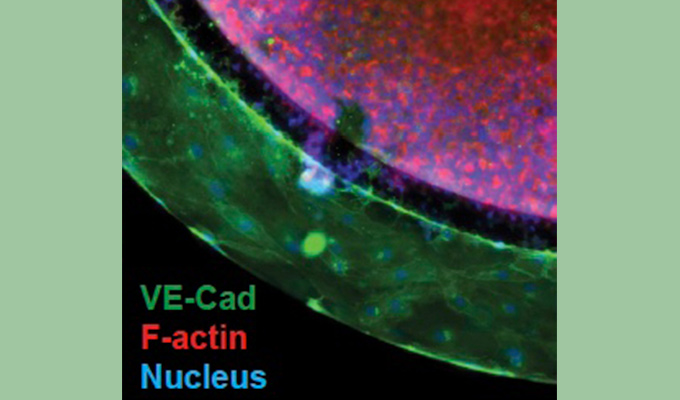The combination of 3D bioprinting and smart hydrogels in the development of functional 3D “tissue like” in vitro assays is booming. In this post, we’ll review some state-of-the-art smart hydrogels and bioprinting, with technical hints for optimal cell encapsidation and printing.
Cell bioprinting and hydogels: which technical challenges?
One of the main challenges for all cell-based bioprinting approaches is the effective anchoring of cells onto solid surfaces. This can require affinity-based anchoring molecules, or can be achieved by printing cells in a hydrogel-based anchoring matrix. The hydrogel matrix should be:
- biocompatible
- ideally, tunable in composition and stiffness
The hydrogel matrix should also remain liquid while still in the printer head and become a gel shortly after printing. Due to the small volumes (nL and pL volumes) required for such methods, the hydrogel needs to gel quickly to prevent excessive dehydration of the droplet.
Light-controlled hydrogels for cell encapsidation & printing
One possible option to fully control your biomaterial for optimal “bio-printability” is the use of UV light-controlled hydrogels with fast curing time.
The first hyaluronic acid-based light-controlled hydrogels available (and now leading the market) is the HyStem® Hydrogel UV QuickSet (available in a 2.5 mL or a 7.5 mL format).
This kit supports:
- 3D cell culture for use in tissue engineering
- micro-small scale bioprinting applications
With the HyStem® Hydrogel UV QuickSet system, you fully control both temporal and spatial parameters. Furthermore, gelation occurs after 30-60 seconds when exposed to UV light as compared to ~30 minutes using other hydrogel formulations.
![Figure 1. Rheometry experiments for shear elastic modulus (G’) of hydrogel networks formed with Glycosil and Gelin-S at various ultraviolet light exposure times and substrate concentrations. [A] Time course with final concentration 0.2% w/v PEG norbornene and UV illumination for up to 15 min. [B] PEG norbornene dose response (final concentrations listed) with UV illumination for 3 minutes at each concentration.](http://5.196.212.231/wp-content/uploads/2016/02/Rheometry-experiments-for-shear-elastic-modulus.png)
This material has proven its bio-compatibility for bio-printing experiments. As an example, it has been shown that mammalian cells (NIH-3T3) are able to both survive after the printing process with the HyStem® Hydrogel UV QuickSet, and then proliferate during long-term cultures. The cells remained within the printed spots until later time points (>100 h) but eventually escaped the 3D hydrogel matrix (Hynes, W.F, et al. (2014) Micropatterning of 3D Microenvironments for Living Biosensor Applications. Biosensors 4: 28-44).

HyStem® Hydrogel UV QuickSet protocol

A guideline for a modified Bioforce Nano eNabler™ has been developed. The precise technical parameters vary between platforms and applications. While other platforms have not been evaluated yet, any system capable of liquid handling and amenable to UV exposure should be easily adaptable for the HyStem® Hydrogel UV QuickSet matrix.
![]() Download the Experimental Protocol here.
Download the Experimental Protocol here.
Looking for a smart hydrogel for your bio-printing?
If you are looking for a validated and fully-controlled bio-material with proven characteristics for 3D cell culture, the HyStem® Hydrogel UV QuickSet is the method of choice!
For more information on cell sourcing or cell culture technologies, you might be interested in tebu-bio’s thematic e-Newsletters. You can browse them and subscribe to one of them through the e-Newsletter subscription center here.



